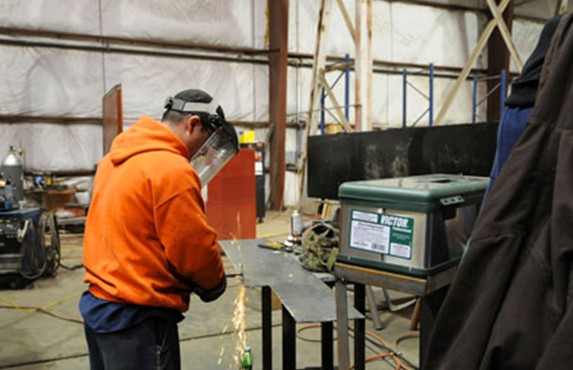考研阅读精选:走入歧途的中部城镇
来源:新东方在线
发布时间:2016-09-26
『昔日的繁荣小城如今被“失业率”打垮,在美国城市曼西,产业工人就业艰难。』
Off-track in Middletown
走入歧途的“中部城镇”
Sep 10, 2011 | From The Economist
![]()

IT HAS been a tough summer for Muncie, a small city 60 miles north-east of Indianapolis and half way between an industrial past and a possible future as a college town. Unemployment dipped briefly below 9% this spring, but floated back up to 10% in June and July. The car-parts makers that were once Muncie’s life blood have largely given up on it; but creating skilled manufacturing jobs at a new locomotive factory is turning out to be a hard slog.
Since sociologists Robert and Helen Lynd rechristened it “Middletown” in a famous study in 1929, Muncie has been regarded as representative of the American experience. In the more diverse 21st century American economy, that is no longer exactly the case, but Muncie’s experience of declining manufacturing employment is similar to that of many small cities across the rustbelt. So when Indiana’s governor, Mitch Daniels, came to town last October, and announced that 650 new jobs would be created assembling locomotives for Progress Rail, a subsidiary of Caterpillar, and a largely abandoned factory rehabilitated, local press and politicians reacted with enthusiasm.
That feeling is wearing off. Fewer than a quarter of the promised jobs have materialised and not a single engine has rolled off the production line. According to a Progress Rail spokeswoman, the company currently employs 150 people in Muncie and has ditched the 650 target, expecting to reach only 250 employees by the end of 2012. The spokeswoman blamed the sluggish hiring on the weak economy, but the path to creating even one job (never mind 650) has been a twisted one.
Progress Rail decided on building locomotives in America in April 2010. It then started negotiations with the Muncie-Delaware County Chamber of Commerce and the Indiana Economic Development Corporation. Muncie’s greatest asset in sealing the deal was the building itself. Originally used to make transformers for Westinghouse and then ABB, the factory had been used to store ketchup and as a Halloween house since the latter company left town in 1998. The 740,000 square-foot (69,000 square-metre) building has a 1,960 foot long main assembly floor, with a railway line running through the door—handy if you are making locomotives.
The two business-promotion organisations set loose such acronymic beasts as HBI, CREED, TIF and CDBG. They are all tax incentives of various kinds and the upshot is that Progress Rail will receive up to $11.1m in subsidies from the state and local governments. Unusually, the state tax credits were tied to capital investment, not to a job creation target. So those 250 jobs might end up costing $44,000 each.
Recruitment ads appeared shortly after Christmas 2010. Work One, a state employment agency, weeded out unsuitable applicants. The jobs drew hundreds of hopefuls, but Barbara Street, a Work One director, notes that there is a big gap between flipping burgers and working at a modern manufacturer. The local branch of Ivy Tech, a community college, agreed to create a three-week welding course to teach the specialised techniques Progress Rail uses. So specialised, in fact, that Bob Richwine, the head welding teacher at the college, said he had never heard of them, and so difficult that only experienced welders could attempt them. Between January and April this year, according to Mr Richwine just 30 welders took the course; the company was looking to hire 70.
Similar tales could be told of the experiences of Brevini, an Italian maker of wind turbine parts, and Magna, a new car-parts maker. If Muncie and similar cities are banking on manufacturing to restore their fortunes, they have a slow road ahead.
热门推荐:
课程 文章 问答 资讯 评论 百科
- 比较正规的考研培训机构12-04
- 研究生考试辅导培训课程哪家好12-04
- 考研网络课程哪个比较好12-04
- 考研专业课培训哪个机构好12-02
- 哪个培训班的考研比较好11-29
- 比较靠谱的考研辅导班11-29
- 考研英语一阅读教学视频06-14
- 烟台考研英语辅导06-14
- 考研网课补习班哪个好03-04
- 考研培训班哪家网校好03-04
- 考研辅导视频教程哪个好03-04
- 考研培训机构哪一家好03-04
- 考研培训班哪个机构的好12-04
- 考研网课机构哪个比较好12-04
- 考研专业课辅导班班哪个好12-04
- 网上哪个考研培训班靠谱12-04
- 哪个考研培训机构比较靠谱12-02
- 考研政治课程哪个网课比较好12-02
- 西综考研哪个老师讲得好03-31
- 管综考研哪个老师好03-17
- 护理考研哪个老师讲得好03-16
- 考研政治网课哪个老师好03-16
- 考研数学网课哪个老师讲得好03-15
- 考研英语网课哪个老师好03-14

